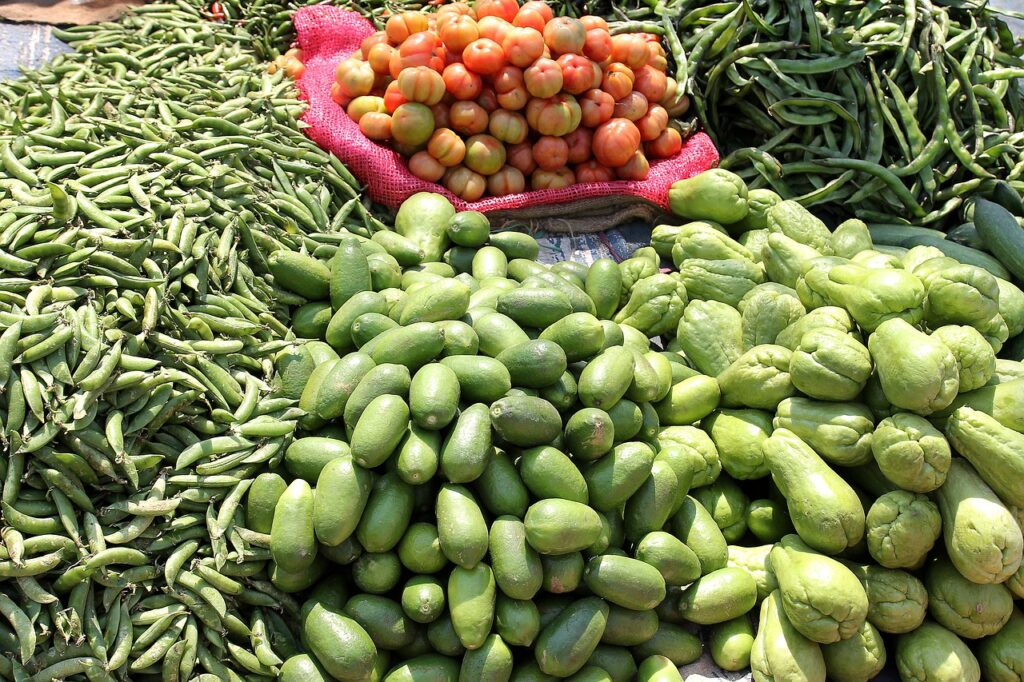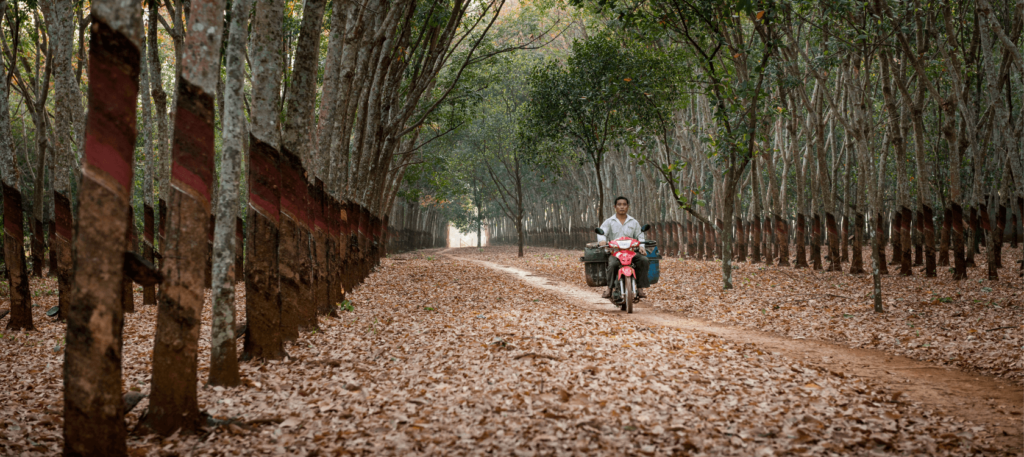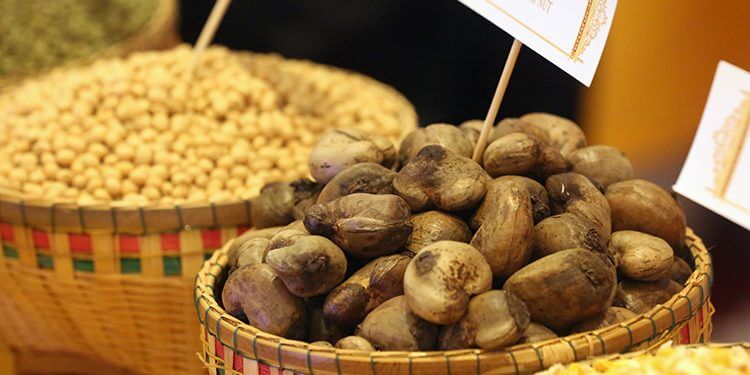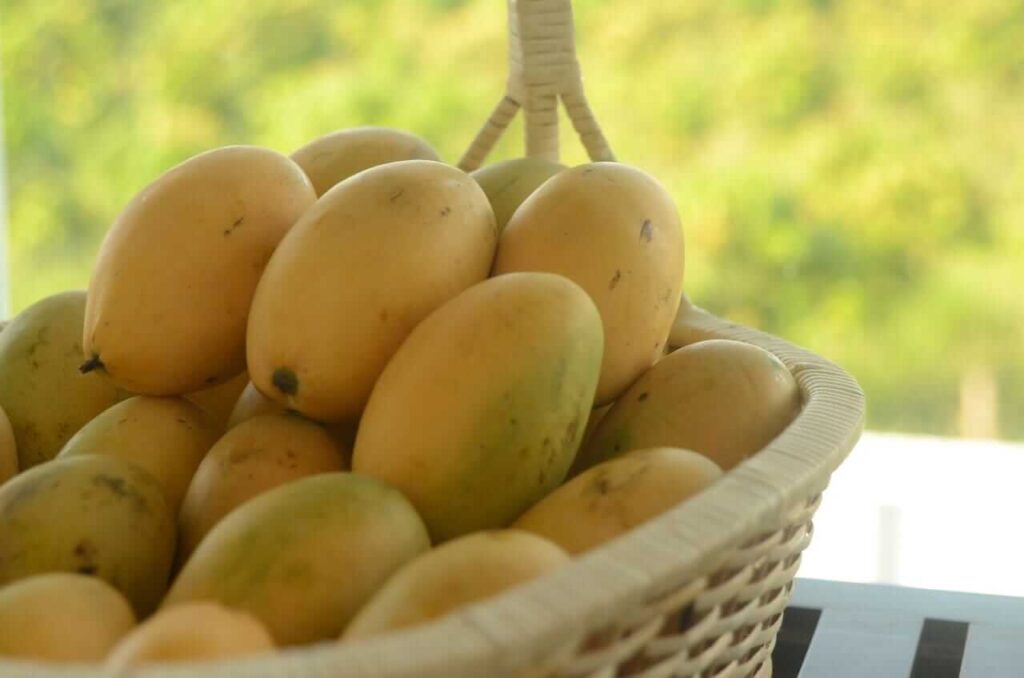Key agricultural commodities and products include rice, rubber, corn (maize), vegetables and fruit, and cassava (tapioca). More than 90 percent of Cambodia’s agricultural exports in 2015 were unprocessed.
The country’s agricultural gross production grew by 8.7% annually over 2004–2012, one of the highest growth rates in the world. This growth largely came from big jumps in crop production of paddy rice (9% annual growth), maize (20%), cassava (51%), sugarcane (22%), and vegetables (10%).
However, in 2013–2014, agricultural growth slowed down to 1%. Cambodia’s 2014 export of about 387,100 tonnes of rice was an increase of just 2% over the 378,850 tonnes shipped in 2013. Prices were down around 30%. The government’s target of 1 million tonnes of rice exports in 2015 (set in 2010) was not met. There have been reduced prices for other products too, including rubber and corn.

High quality, big challenges
A number of Cambodian products have an international reputation for high quality. For four years – in 2012, 2013, 2014 and 2018 – Cambodian premium jasmine rice won World’s Best Rice award. Kampot pepper has Geographical Indication (GI) status, a World Trade Organization initiative that links the quality of a product to its origin.
Yet there are big hurdles to overcome in developing the agricultural sector, building processing industries and securing large export growth. Some of the issues:
- There is a severe lack of processing facilities for many products including rice, rubber and cashews.
- A lack of storage facilities for many agricultural commodities, including rice, corn and rubber, means they must be sold when they are harvested, regardless of the market price at the time – they cannot be stored until prices rise. There are still many areas of the country where there is no electricity supply, and power prices are high compared to some other countries in the region. This makes it harder to develop processing industries, and makes operating costs higher.
- Global food and commodity prices have fallen, and are not forecast to rise significantly.
- Some producers talk about transport and infrastructure problems, such as the difficulty of getting large volumes of rice exported through the port.
- There is an extremely limited budget for promoting Cambodian products overseas.
- Some agricultural products are only exported to neighboring countries, and demand and prices can be volatile.
Government policy
Agricultural development, particularly the growth of processing, is a big element of the Cambodia Industrial Development Policy 2015–2025 that was publicly launched in August 2015. A key target in the policy is increasing processed agricultural exports to 12 percent, a 4 percent increase on the figure for 2015.

Commodities and products
There are big differences in what can be earned from different crops, and World Bank research indicates that different margins may be driving some changes in Cambodia. The share of total area planted under paddy rice declined from 86 to 74 percent from 2002 to 2011, while the share of area for maize and cassava production increased significantly. In 2013, average farm gross margins (and returns to labor) were $506/ha ($9.4/day) for cassava, $303/ha ($8.8/day) for maize, and $1,393/ha ($7.2/day) for vegetable production, compared to $245/ha ($4.6/day) for wet season rice and $296/ha ($9.6/day) for dry season rice.
Within rice production there are changes too. More farmers are producing aromatic paddy, which is more profitable. Production is estimated at 10 percent of the rice cultivated area and 30 percent of total production.

Natural rubber
World rubber prices hit a peak of $4,850 per tonne in 2011, but then gradually fell down to $1,100 per tonne at the start of 2016. The government has said that the average price received in 2018 was US$1,213 per ton. Around 217,500 tons was exported, with Vietnam being the main market.
Rubber plantations cover 436,682 hectares, with around 201,850 hectares in production.
Cassava
The area under cassava more than doubled in the years 2005–2013. By mid-2019, cassava plantations covered 400,000 hectares.
A lack of processing factories in Cambodia means there is little value added, however. Instead of exporting products such as cassava chips, mostly unprocessed cassava and cassava flour is exported to Thailand (the largest market), Vietnam and China. Cambodia’s raw cassava is processed in these countries and reexported.
In the first 7 months of 2019, Cambodia exported 960,550 tons of dried cassava and 612,200 tons of fresh cassava to Thailand and Vietnam. It also exported 33,287 tons of cassava powder to Vietnam, China,The Netherlands, the Czech Republic, Canada, Italy and India.

Cashew nuts
In the first 7 months of 2019, Cambodia exported 167,285 tons of cashew nuts to Vietnam, Russia, China, South Korea, Myanmar, Peru and Saudi Arabia.cThe country has set a target of 1 million tons. As of mid 2019, cashew plantations covered 170,000 hectares.
Corn
Corn has faced falling prices and falling export demand in recent years. Prices in 2014 were 40 percent below those of 2013. Battambang leads Cambodia’s corn production with over 27,000 hectares. On average, farmers are producing up to 4 tonnes of corn per hectare. Lack of storage silos is a major problem.

Mangoes
Cambodia has nearly 132,000 hectares of mango trees, yielding around 1.38 million tons of fresh mangoes annually. The dry season harvest typically takes place in March-April, and the smaller rainy season harvest in October-November.
Last update: 12 August 2019
Other than Agricultural commodities, processing and products
River sand for construction, Sea sand for reclamation and silica are what we can match between you and sellers in case you would like to do direct order.
9 factors needs buyers to provide
We, Adaeng Development Co. Ltd., hereby state and represent that it is our intention to supply, and we hereby confirm that we are ready, willing and able to facilitate or sell the commodities above as per the specification and in the quantity and for the price as specified in the terms and conditions as stated below.
- Commodity: Commodity name
- Destination: Country where you want to ship commodity to.
- Country of Origin: Cambodia
- Quantity: xx,000,000 MT Per Month Per BUYER
- Stockpile Status: At least x00,000MT for delivery within a week
- Shipment: FOB with buyer providing Handymax vessel.
- Price: FOB SIHANOUKVILLE SEA PORT, CAMBODIA $xx,xxx.00USD Per MT.
- Payment Terms: Escrow 100%. Deposit 10%, Pay upon SGS Certification
- Contract Terms: One year
